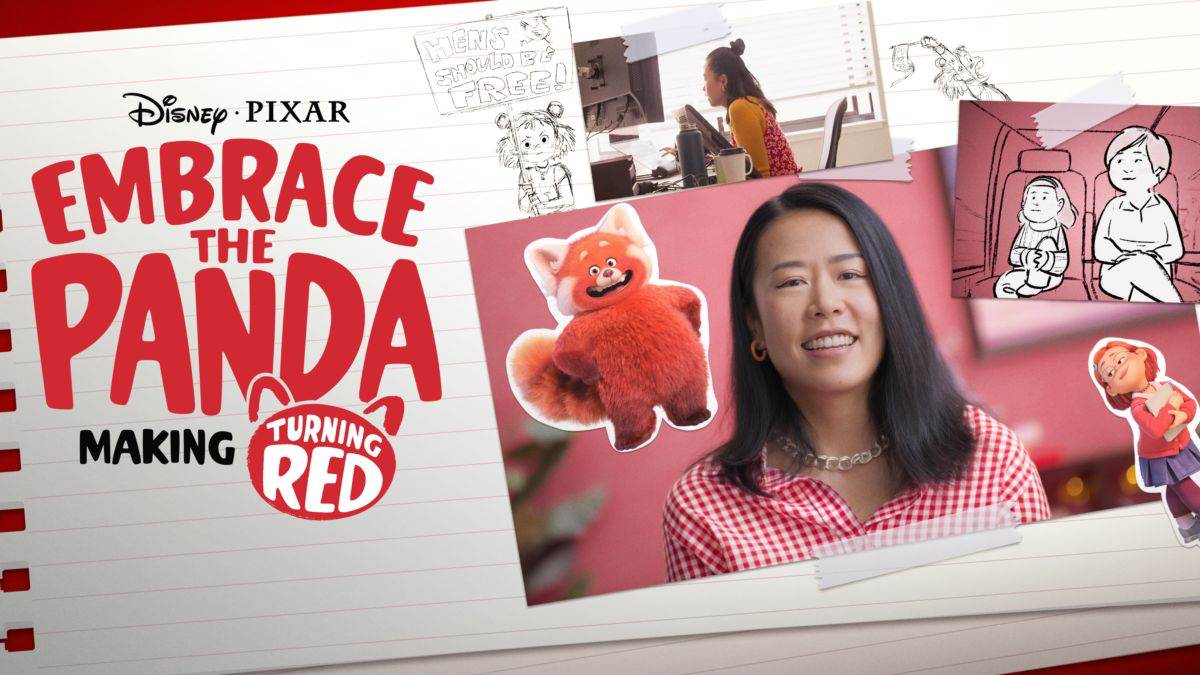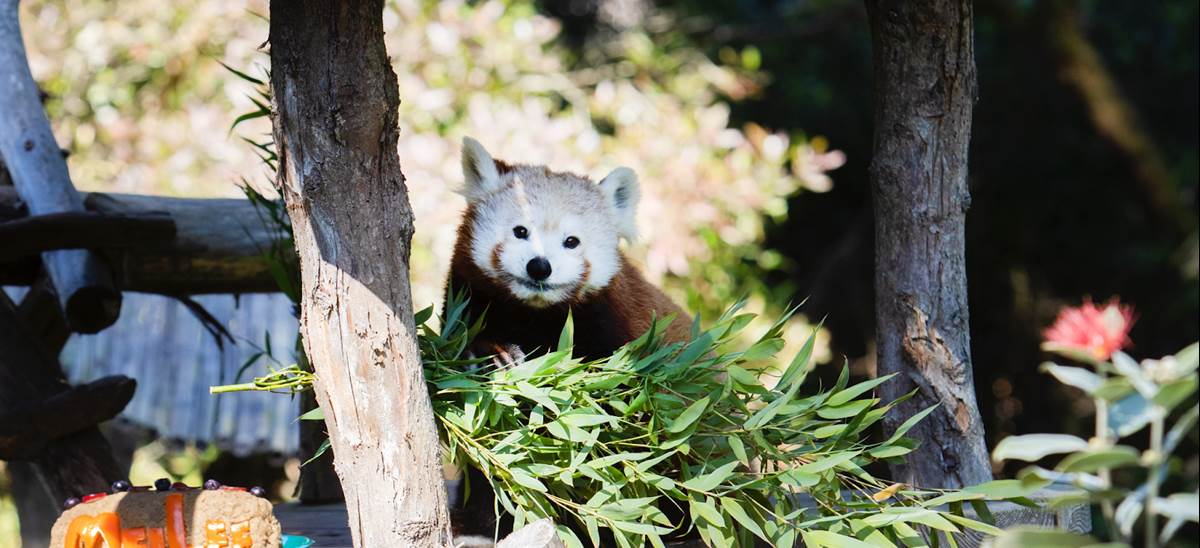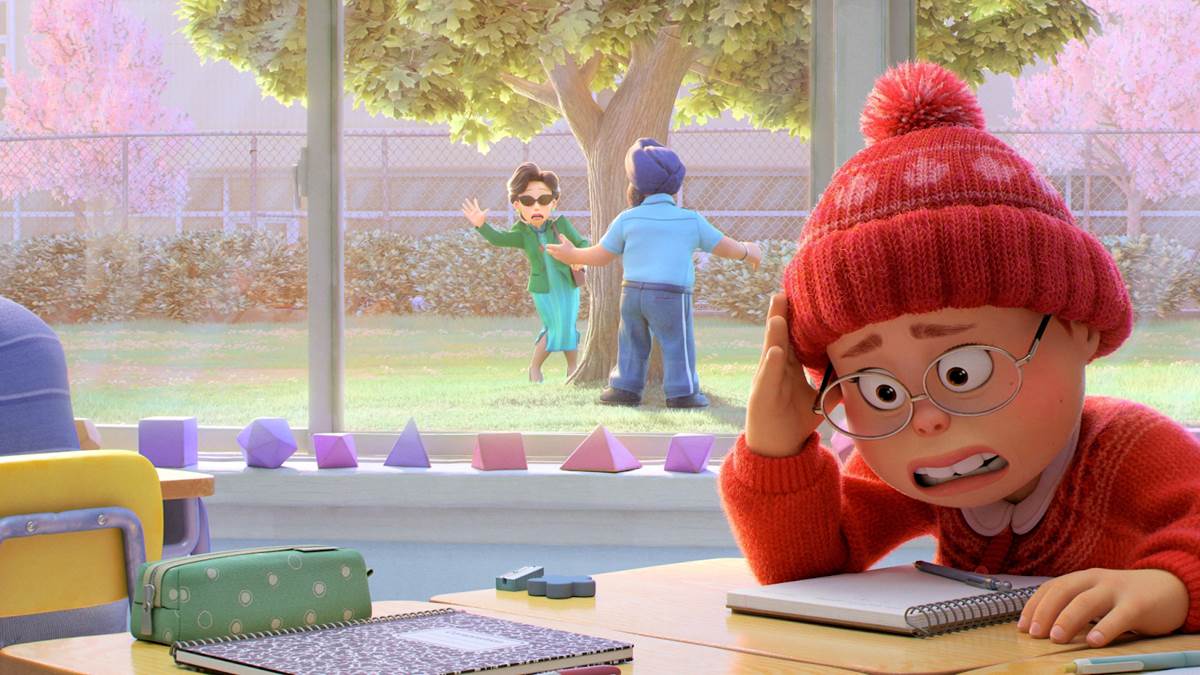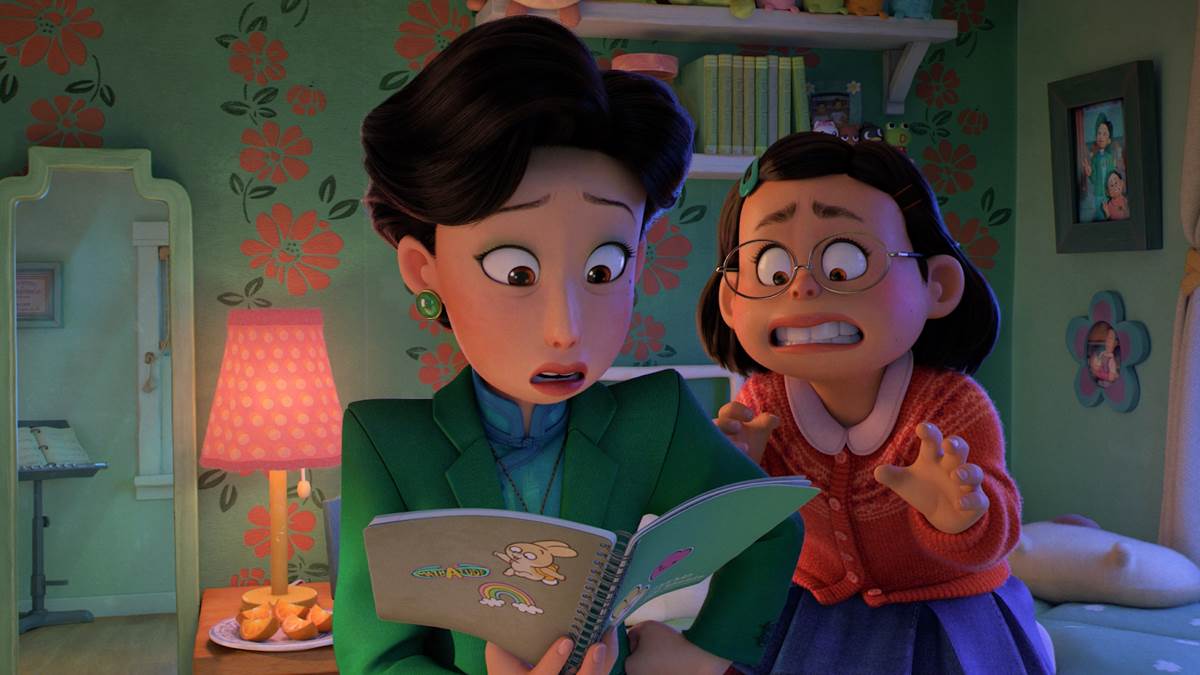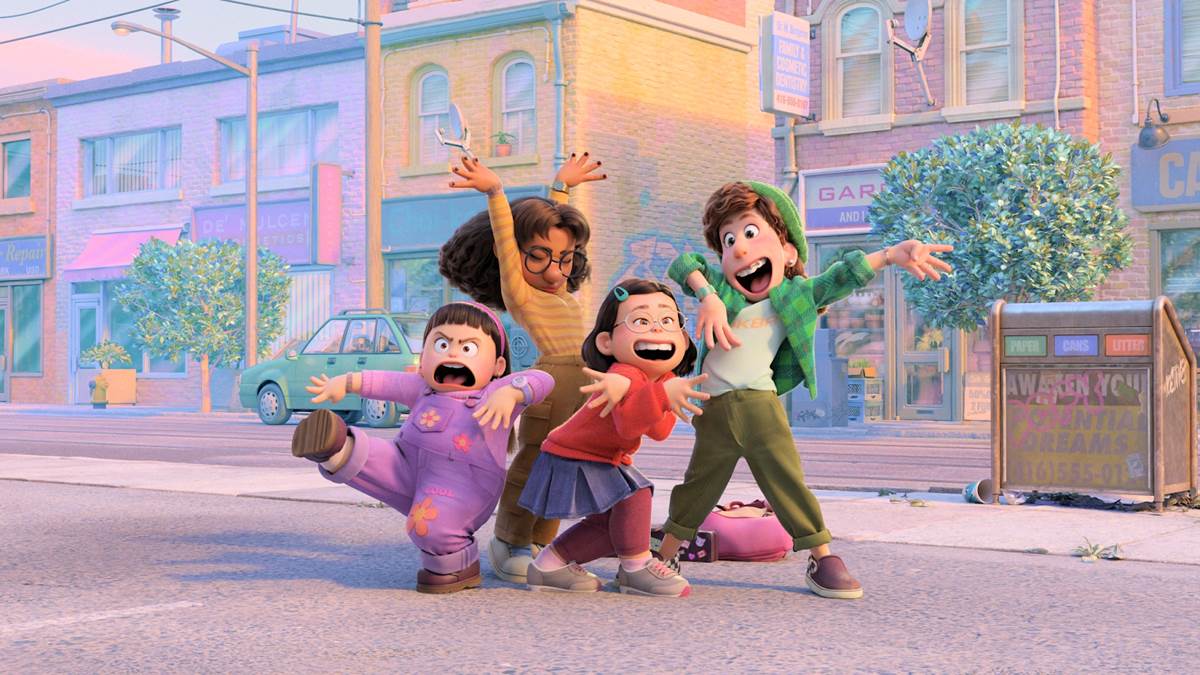Have you watched Turning Red yet? No. Go do that first. Go ahead. Go. Okay. Now that that’s taken care of, Disney+ is getting in on the DVD/Blu-Ray Bonus Features idea and has debuted a new making of documentary that dropped alongside the film when it debuted on the streaming service this weekend, Embrace the Panda: The Making of Turning Red.
Right off the bat, we are shown much of the creative team on a research trip at the San Francisco Zoo looking at the real red pandas that are housed in an exhibit there. Immediately, director Domee Shi makes the correlation that the animals have quite a few parallels between the film. They’re attached to their mothers, they eat foods that aren’t good for them (like teenagers would) but even their fur has the same colors as the Canadian flag.
In Pixar’s Turning Red, we are introduced to Mei Lee, a confident, dorky 13-year-old torn between staying her mother’s dutiful daughter and the chaos of adolescence. And if that weren’t enough, whenever she gets too excited, she “poofs” into a giant red panda! Sandra Oh lends her voice to Mei’s protective, if not slightly overbearing mother, Ming. The voice cast also includes Ava Morse, Hyein Park, Maitreyi Ramakrishnan, Orion Lee, Wai Ching Ho, Tristan Allerick Chen, Lori Tan Chinn, Mia Tagano, Sherry Cola, Lillian Lim, James Hong, Jordan Fisher, Finneas O’Connell, Topher Ngo, Grayson Villanueva, Josh Levi, Sasha Roiz, Addie Chandler and Lily Sanfelippo.
Director Domee Shi simplified the entire premise, saying it’s “Magical Puberty.” The documentary then introduces the rest of the all-women key creative team telling their take on the story, all while showcasing old personal photos of themselves as teenagers, comparing themselves to the story. While the documentary doesn’t dwell on this fact, the key creative team for Turning Red is all women:
- Director Domee Shi
- Producer Lindsey Collins
- VFX Supervisor Danielle Feinberg
- Production Designer Rona Liu
A good portion of the documentary does spend some time introducing them more individually, explaining what they do and have done at the studio and their contributions to Turning Red. While Domee Shi is a first time director for a full-length feature, many will recognize her name as the Academy Award winning director for the short film, Bao. It was there that she collaborated with Rona Liu, who both admire and respect each other’s work. Domee even said that they work together better than if they worked separately.
Feinberg and Collins have a lengthy resume at the studio, with Collins’ beginning dating back to A Bug’s Life. Feinberg contributed to Wall-E, serving as Director of Photography. Between her work on Wall-E and Collins’ collaborations, the two grew close with Director Andrew Stanton (Finding Nemo, Wall-E) who encouraged them to press forward and set goals instead of just thinking they couldn’t move forward, and would ask them to come be this advanced title with him.
Like all documentaries of the era, we get to spend a bit of time talking about the production during the height of the pandemic. This one doesn’t try to make it sound like they were the only film to be affected (others do, trust me) but they acknowledge that it happened and collaborations and some voice recording sessions happened at home. Instead of focusing on HOW they did it, they showed the strength of the team working on the film, staying connected if for no other reason, just to have more than 2 people to talk to at home.
Sidebar: Turning Red takes place in 2002. While nostalgia is in play, it’s in play more in this documentary, with different talent and introductions being showcased on say, a Game Boy Advance or Tamagotchi, or chunky TV with built in VCR or other relics that will make people point at the screen and say “I had that!”
While other animation documentaries might take some time to focus on “hey, we built this special lighting rig” or “this fur was so complex we had to write new algorithms,” this one really tends to focus on the personal nature of the story. We learn about Domee’s relationship with her parents, which if you’ve watched Turning Red by now, is all too familiar. She shares stories about how she would be very close with her mother, taking trips regularly, but as she got older found herself wanting to do her own thing. On the other hand, Producer Lindsay Collins flips the story, and gives it the Mom’s perspective, trying to make sure the kids are safe and protected and ready to be adults in the world. Domee even says that it was Collins’ touch that gave sympathy to Mei’s mom, as Domee had always seen it as an oppressed teen story. Collins even joked that she’s surrounded by puberty at all times, with it a strong part of the story, and her puberty aged children at him. Talk about exhausting.
More importantly, the all-women creative team had personal lived experience as a 13 year-old girl. They share their experiences at that age, going to parties, or staying at home with their squad of two or three friends. Once again, you can see the parallels that are translated into the film. One thing that went in was the fact that not every kid character is perfect. Liu describes the look of the characters as a “chunky cute” art style, and decked out the characters with embellishments that they might have been self conscious about when they were younger, like moles or “patchy eyebrows.”
Even though the film is set in Toronto, Chinese Culture is very much in play in this film. Research trips were taken to temples around California, and even some of the team, including Shi, have lived adjacent to one. Much of the detail and little quirks made it into the temple in the film. At the same time, the film stays true to Canada, with locations and landmarks being clearly visible and authentic.
All in all, this documentary wasn’t so much about the step by step process of making an animated film like so many are. Instead, it takes a more personal look at the senior creative team that worked on it and poured their own personal experiences into the story. With such a personal, lived, movie, it just makes sense that the making of documentary is more about those lived experiences than how a render farm works.
Embrace the Panda: The Making of Turning Red is now streaming on Disney+.

